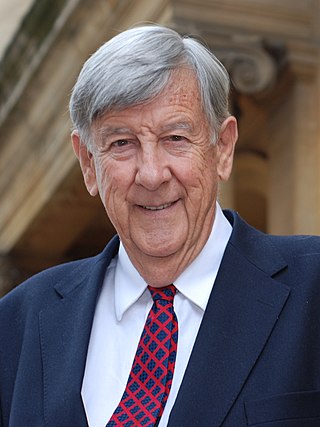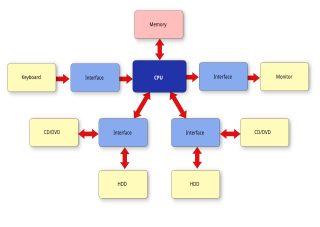
Systems engineering is an interdisciplinary field of engineering and engineering management that focuses on how to design, integrate, and manage complex systems over their life cycles. At its core, systems engineering utilizes systems thinking principles to organize this body of knowledge. The individual outcome of such efforts, an engineered system, can be defined as a combination of components that work in synergy to collectively perform a useful function.
The waterfall model is a breakdown of development activities into linear sequential phases, meaning they are passed down onto each other, where each phase depends on the deliverables of the previous one and corresponds to a specialization of tasks. The approach is typical for certain areas of engineering design. In software development, it tends to be among the less iterative and flexible approaches, as progress flows in largely one direction through the phases of conception, initiation, analysis, design, construction, testing, deployment and maintenance. The waterfall model is the earliest SDLC approach that was used in software development.
Michael Anthony Jackson is a British computer scientist, and independent computing consultant in London, England. He is also a visiting research professor at the Open University in the UK.

Bertrand Meyer is a French academic, author, and consultant in the field of computer languages. He created the Eiffel programming language and the concept of design by contract.

Barry William Boehm was an American software engineer, distinguished professor of computer science, industrial and systems engineering; the TRW Professor of Software Engineering; and founding director of the Center for Systems and Software Engineering at the University of Southern California. He was known for his many contributions to the area of software engineering.
The following outline is provided as an overview of and topical guide to software engineering:
Agile software development is an umbrella term for approaches to developing software that reflect the values and principles agreed upon by The Agile Alliance, a group of 17 software practitioners in 2001. As documented in their Manifesto for Agile Software Development the practitioners value:
Requirements engineering (RE) is the process of defining, documenting, and maintaining requirements in the engineering design process. It is a common role in systems engineering and software engineering.
Software prototyping is the activity of creating prototypes of software applications, i.e., incomplete versions of the software program being developed. It is an activity that can occur in software development and is comparable to prototyping as known from other fields, such as mechanical engineering or manufacturing.

The V-model is a graphical representation of a systems development lifecycle. It is used to produce rigorous development lifecycle models and project management models. The V-model falls into three broad categories, the German V-Modell, a general testing model, and the US government standard.
In the context of software engineering, software quality refers to two related but distinct notions:

James Martin was an English information technology consultant and author, known for his work on information technology engineering.
Requirements management is the process of documenting, analyzing, tracing, prioritizing and agreeing on requirements and then controlling change and communicating to relevant stakeholders. It is a continuous process throughout a project. A requirement is a capability to which a project outcome should conform.

A system architecture is the conceptual model that defines the structure, behavior, and more views of a system. An architecture description is a formal description and representation of a system, organized in a way that supports reasoning about the structures and behaviors of the system.
Quality engineering is the discipline of engineering concerned with the principles and practice of product and service quality assurance and control. In software development, it is the management, development, operation and maintenance of IT systems and enterprise architectures with high quality standard.
Search-based software engineering (SBSE) applies metaheuristic search techniques such as genetic algorithms, simulated annealing and tabu search to software engineering problems. Many activities in software engineering can be stated as optimization problems. Optimization techniques of operations research such as linear programming or dynamic programming are often impractical for large scale software engineering problems because of their computational complexity or their assumptions on the problem structure. Researchers and practitioners use metaheuristic search techniques, which impose little assumptions on the problem structure, to find near-optimal or "good-enough" solutions.
The Advanced Learning and Research Institute (ALaRI), a faculty of informatics, was established in 1999 at the University of Lugano to promote research and education in embedded systems. The Faculty of Informatics within very few years has become one of the Switzerland major destinations for teaching and research, ranking third after the two Federal Institutes of Technology, Zurich and Lausanne.
Universal Systems Language (USL) is a systems modeling language and formal method for the specification and design of software and other complex systems. It was designed by Margaret Hamilton based on her experiences writing flight software for the Apollo program. The language is implemented through the 001 Tool Suite software by Hamilton Technologies, Inc. USL evolved from 001AXES which in turn evolved from AXES all of which are based on Hamilton's axioms of control. The 001 Tool Suite uses the preventive concept of Development Before the Fact (DBTF) for its life-cycle development process. DBTF eliminates errors as early as possible during the development process removing the need to look for errors after-the-fact.
Jacobus Nicolaas (Sjaak) Brinkkemper is a Dutch computer scientist, and Full Professor of organisation and information at the Department of Information and Computing Sciences of Utrecht University.






